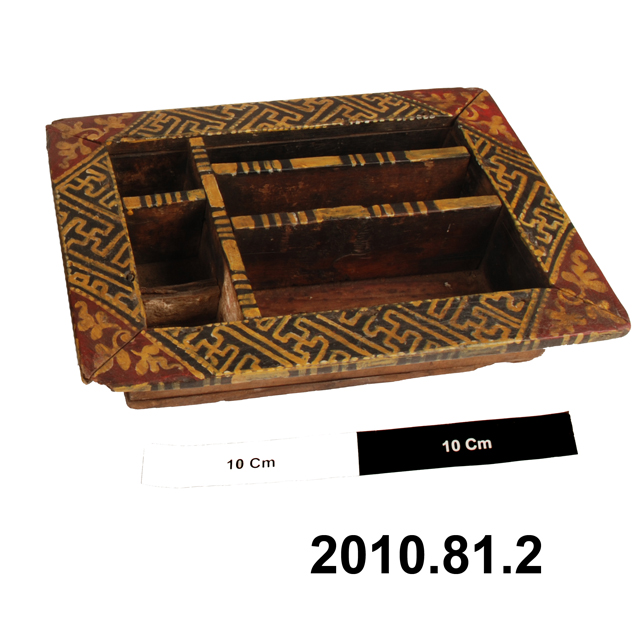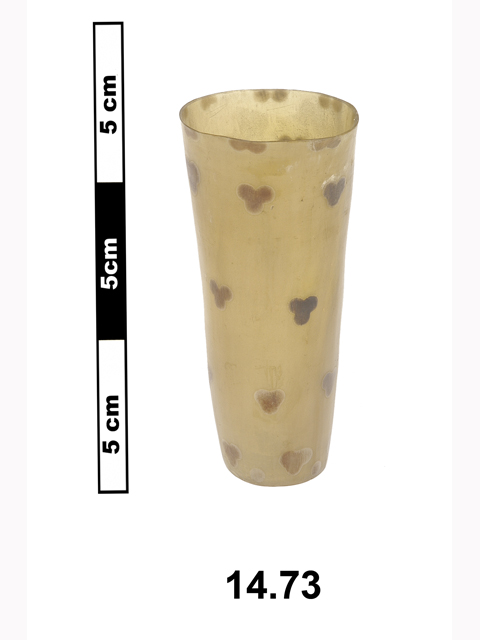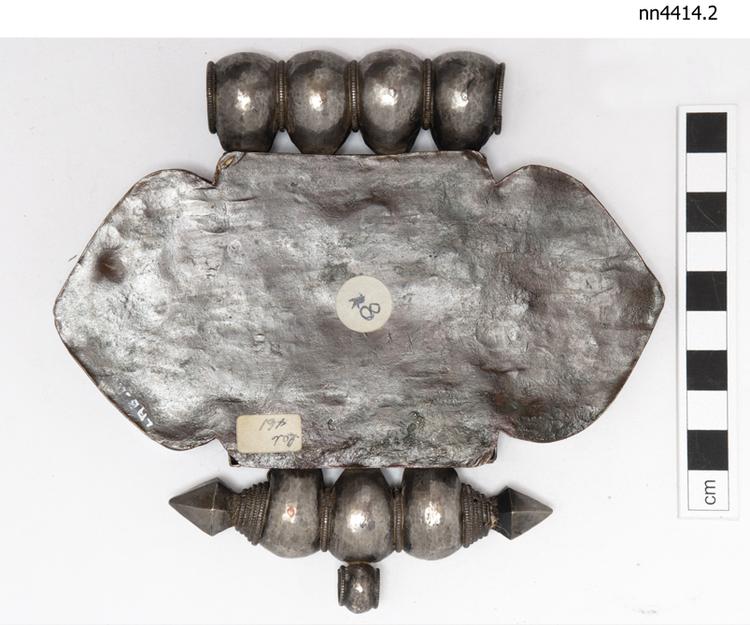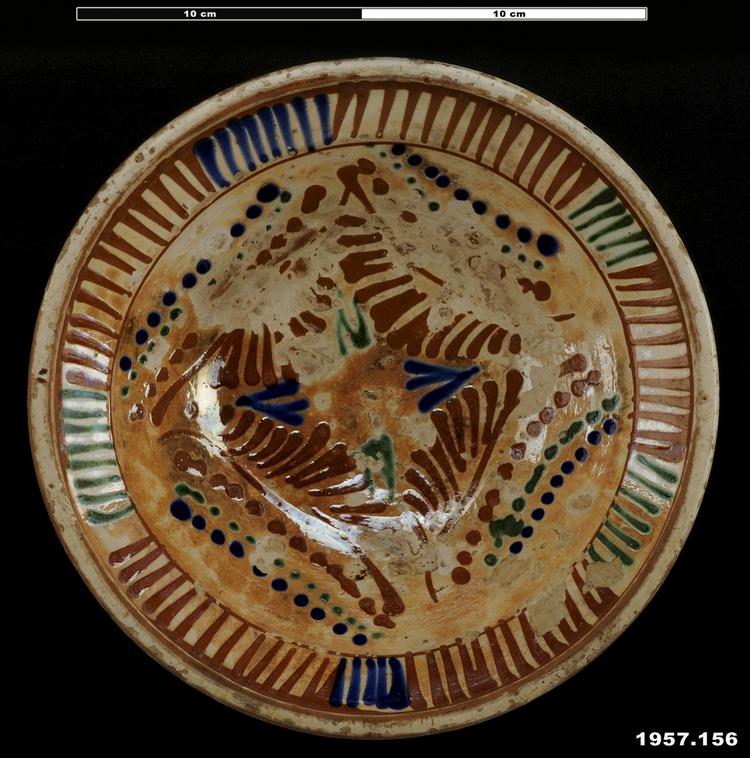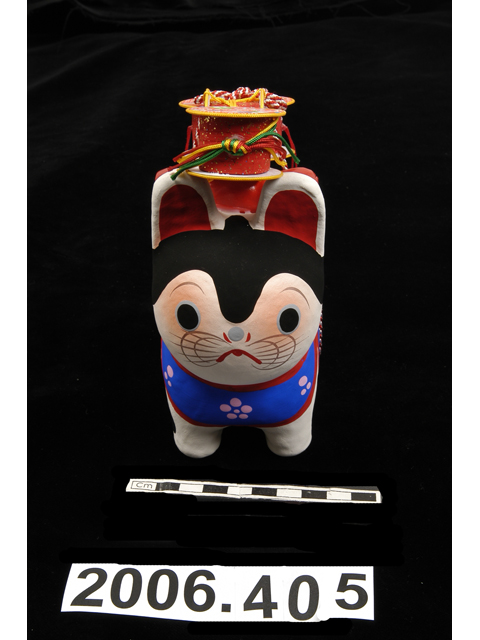

Papier-mâché model of a dog, Inu-Hariko. White with blue, red, white and pink painted decoration. Three model drums (den-den-daiko) are glued to the back. On the side of each drum is red paper with floral patterns. The rearmost drum has a bell suspended on cords from either side. A gold-coloured pole wrapped with a diagonal red stripe projects behind the dog from the back of the rearmost drum. The middle drum, supported on a red, more or less cylindrical, cross-beam, is bound with yellow cord. The front drum has a bow at the front tied with green, red and yellow cord. The dog has erect ears and tail (which curves over its back below the drums), and a painted black cap over its eyes. The face is painted with round black eyes, a red mouth and brownish whiskers and eyebrows. There is a decorative yoke and saddle in blue, white, and pink with a red border. The model is said to represent a deity who protects babies, Koma Inu. A leaflet is also provided with the model.
Label on the base: during the Heian period the Emperor had the figure of a dog in his crest, and during the Edo period, dog-shaped dolls were made to bring happiness to children. Because dogs have many puppies with ease, they were also associated with childbirth, and because of this and the imperial association, model dogs were often placed in the room where a noblewoman was giving birth.



